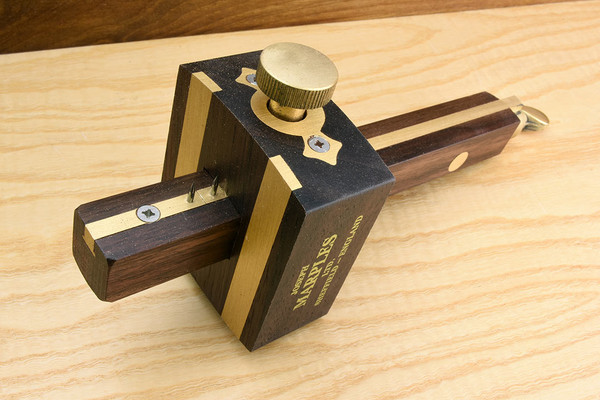The Marples screw slide combination gauge has a single pin on one side and dual pins on the other, allowing for single lines or parallel lines for drilled mortices, stringing etc.
The moving pin on a screw slide gauge is governed by a threaded mechanism running up the centre of the stem, making it slightly easier and more precise to use than a sliding stem gauge. The working face of the head is inlaid with solid brass wear strips and a shield under the screw, making this a particularly attractive tool.
English marking gauges are used with the stock and the corner of the stem both in contact with the workpiece. Stand the timber firmly against a bench dog or in the open jaw of the vice and sight along it, pressing the head of the marking gauge up against the prepared face side or edge. The top of the gauge is rolled towards you like the throttle of a motorbike as you push the gauge away, insinuating the pin or cutter onto the surface and carefully placing your mark, lightly at first and then deeper until a clear mark is achieved. The curved underside of the stem provides a clear view of the pin and the mark, whilst light creeping in between the board and either the stem or the head provides instant warning if correct registration with the workpiece is lost.
It is good practice to test your gauge settings on a piece of accurately planed scrap before committing to a mark on the component, retaining the scrap piece for the duration of the project will allow you to double check your original settings should this be necessary.
Approx Measurements, (Length x Width x Depth)
- Stem Dimension: 190 x 18 x 17mm (7½ x ¾ x ¾")
- Head Dimension: 65 x 56 x 28mm (2½ x 2¼ x 1⅛")
- Rosewood and Brass












